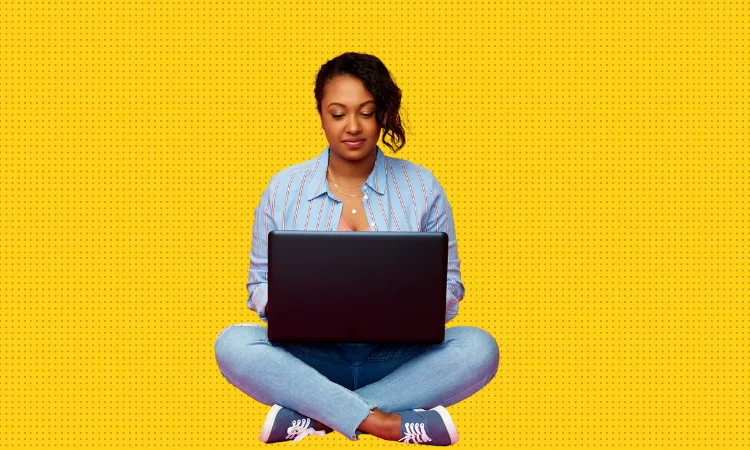How to design onboarding elearning that wins hearts and minds
7 minute read
Onboarding is about so much more than a years-old marketing video from the CEO and a building tour to point out the fire exits! Well-designed onboarding elearning improves employee retention, engagement and loyalty, as well as compliance and speed-to-competence – all really important business metrics.

Would you believe that one third of people leave a job within the first year? Or that 22 percent of staff turnover happens within the first six weeks? You might think a new recruit starts with the intention of sticking around long-term, but actually, only 33 percent are committed to staying until the end of their first week on the job.
With stats like that, and the cost of losing someone in those early months sitting at up to triple their salary, it’s not hard to see why investing in your employee onboarding offering is the smart choice.
Read on to learn more on:
- Onboarding as a journey
- What preboarding is and how to do it successfully
- Preboarding tips
- Onboarding best practises
Onboarding is a journey, not an event
Something about the terms induction or orientation suggests a one-off event, something functional and fleeting. By contrast, the most effective onboarding programs recognize that retaining the person you’ve spent time and money recruiting depends on a warm welcome, clear expectations and support to hit the ground running. And those things take time.
The best onboarding also recognizes that it’s not a one-way process. Imagine you’ve just joined a new company: the recruitment process really sold the company to you and you’re excited about the new role, although apprehensive too – there’s a lot to learn! You hope you’ve made the right decision, but equally, you know there are other positions out there if this one doesn’t work out.
If the onboarding process doesn’t answer your questions, help you settle in, and deliver a reality that matches up to what the recruitment process promised you, well…you’re unlikely to be starting off on the most engaged, committed foot.
So, when designing an onboarding experience, think about what the individual wants and needs to get from it as well as the information you want to convey to them. The experience needs to convince them that they made the right decision and could have a long-term future here.
What is preboarding?
Why should onboarding start on the first day and not before? Preboarding involves starting the process earlier, before new hires step through the door and gets them further along that crucial company learning curve. Preboarding can help them perform at their best more quickly – and, just as importantly, makes them feel especially excited about and welcomed to their new work home.
How to preboard employees
Design some fantastic welcome materials to send to new hires a week or so before their start date to boost their confidence and understanding of the company.
Pre-boarding materials can often be curated from materials and stories you already have in-house and on your company website. Pull them together into a slick digital package, and you can let new hires:
- Meet their team via videos or bios
- Get the lowdown on what the company and team do
- Download a plan for their first day and week
- Ask questions directly to their team or manager
- Start some of the onboarding training around processes
- Sign up to Slack or other in-house communication channels to get reading and talking to people ahead of the game
- Get to grips with the customer base for client-facing roles
- And much more
Tips for effective preboarding
1. Set the tone
Pre-boarding materials are a huge opportunity to make a positive impression on those important new recruits. They give a sense of brand and team to connect with and feel part of. Friendliness and clarity of information will pay dividends over formality.
2. Include real people
Finding a friendly/helpful face or two really matters to helping people make a connection to their workplace. Tap into real stories from people who work in the company or team, about what work is like and what they do to help paint a warm and “human” picture of the company.
3. Add personalization
While there’s lots of company info that everyone needs to know, the temptation to make onboarding and pre-boarding materials generic can often kill off the welcoming vibe needed to make new hires feel important and part of the picture. Be sure to drop in some targeted content around that person’s team or work location, and ensure there’s space for them to ask you questions and make comments.
4. Set clear expectations
Being super clear and setting expectations around someone’s role and what they can expect to happen on day one or week one helps set the right foundations, and will likely help accelerate getting employees up to the required performance level. It also gives each new hire a chance to comment and ask questions, and be part of their own onboarding process.
Once you’ve preboarded your employees, the fun can really start! The onboarding stage is crucial for making your new hires feel welcome, engaged and settled in their role. Check out our top tips for building effective onboarding that works every time:
Onboarding best practises
1. Survey newer employees about their joining experience
Ask your newer employees about their onboarding to find out them what impression it gave of the company and how that compared to their expectations, what questions they had on the first day that were left unanswered and, how long it took them to feel both at home and able to fulfil their role. These are valuable insights you can use to inform your onboarding strategy. These people are a goldmine of valuable insight!
Shape your problem and audience needs by downloading our project planning template.
2. Adopt an online approach with elearning
Taking an online approach can create consistency and efficiencies along the way. An online approach to onboarding also means:
- Employees can access content as they need it, without relying on other people’s schedules.
- All employees receive consistent messaging, whenever and wherever they join.
- Ease of updating means it’s always relevant – another key factor in onboarding success.
- There are no ongoing or recurring operational costs for facilitators, venues, travel or equipment.
- Risk can be reduced and compliance tracked – for instance, by releasing login details only after certain compliance elements have been completed.
Take stock of how many people you onboard each year either individually or in cohorts, and the number of locations and time zones you’re catering for. This is where something like learning analytics can help. Chances are, onboarding elearning makes good sense!

3. Think about what to cover, and when
On their first day, a new joiner’s priorities are likely to be physical orientation (where the toilets and cafeteria are!) and getting to know the team. They’ll need to get set up on the IT network too. In the first few days, look at covering:
- Welcome messaging from key individuals – be that senior members of the organization, team members particularly relevant to the new joiner’s role or both!
- Clear expectations about the role, how quickly they need to be up to speed (and what that looks like) and what they should look to achieve in the first week, month or year.
- Questions they might have about performance reviews and reward, and other HR processes and policies.
- Key processes, tools or software to get to grips with. Use interactive elearning scenarios or simulations. Keep them focused and practice-oriented.
Other topics to cover, valuable and important but not necessarily urgent, can be slotted in during the first week. These include:
- The story and strategy of the organization, perhaps an interactive timeline of key events and achievements. This promotes a sense of “membership” or belonging.
- Organizational values and culture. Be wary of making this too instructional, a list of rules to live or work by. Instead, show how the values make this a great place to work.
- Performance support to be used in context as they sink into their new role, improving speed-to-competence and removing much of the uncertainty that comes with a new role.
A checklist that sets out what must be done by specific points as well as the more “nice to have” elements lets the new joiner prioritize their activity and means they can easily find useful things to do in those inevitable quiet periods in the early days of a new job. Consider which elements can be covered as part of your preboarding to avoid overwhelming employees with information during their first few days.
4. Think beyond a course.
A website, portal or app made up of many different resources and media components, freely accessible in any order and at any time, could be more effective. Combined with face-to-face elements where they really add value, you can design an effective, efficient blend. BP’s online induction is a great example of this.
5. Make use of existing assets.
Don’t reinvent the wheel or spend money producing content and media that already exists. Scour marketing, recruitment and HR departments for great quotes, inspiring case studies and more.
6. Design for all devices
Onboarding is a case where responsive design is really worth doing. Make it easy for new joiners to access just-in-case content when they want, and just-in-time content when they need.
7. Take advantage of elearning features.
Social polling, badges and progress trackers can all be great ways to engage new joiners in the onboarding process and make them feel connected to the wider team and workforce.
In summary…
The onboarding process has some pretty big objectives! It’s got to be both useful and persuasive, conveying key information, but also a good sense of the organizational culture. And to have maximum impact, it’s got to be delivered at the right time. Elearning can be a great way to do this, really maximizing those early days and balancing flexibility to suit the new joiner with the security of knowing that everything will be covered consistently.
For more tips on how to develop a winning employee training program, check out our guide to designing the best elearning online courses!
We can help you do it!
Turn what you know about your audience’s onboarding needs into a vision for an effective and engaging piece of learning by downloading our conceptualize guide!




